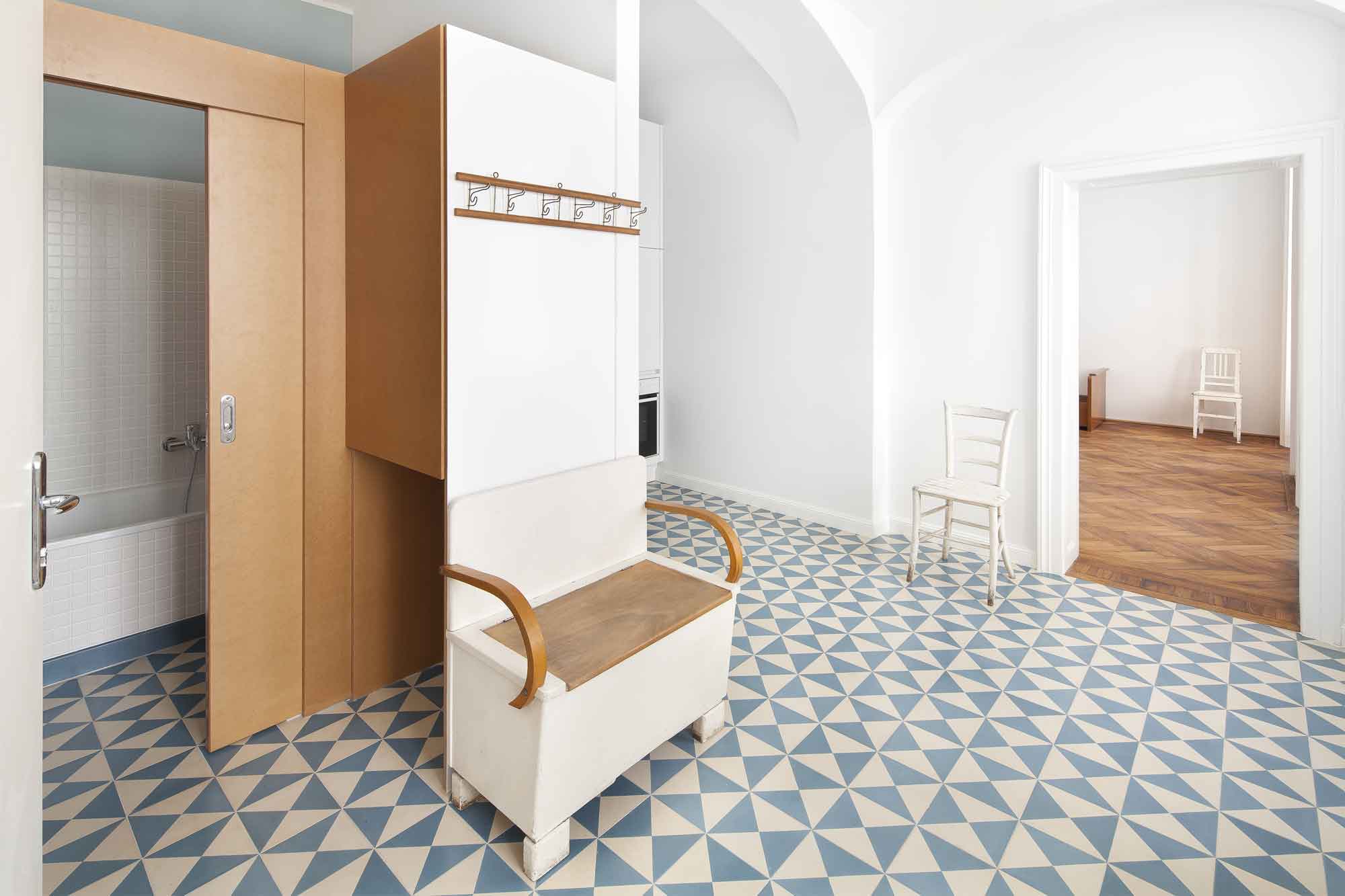
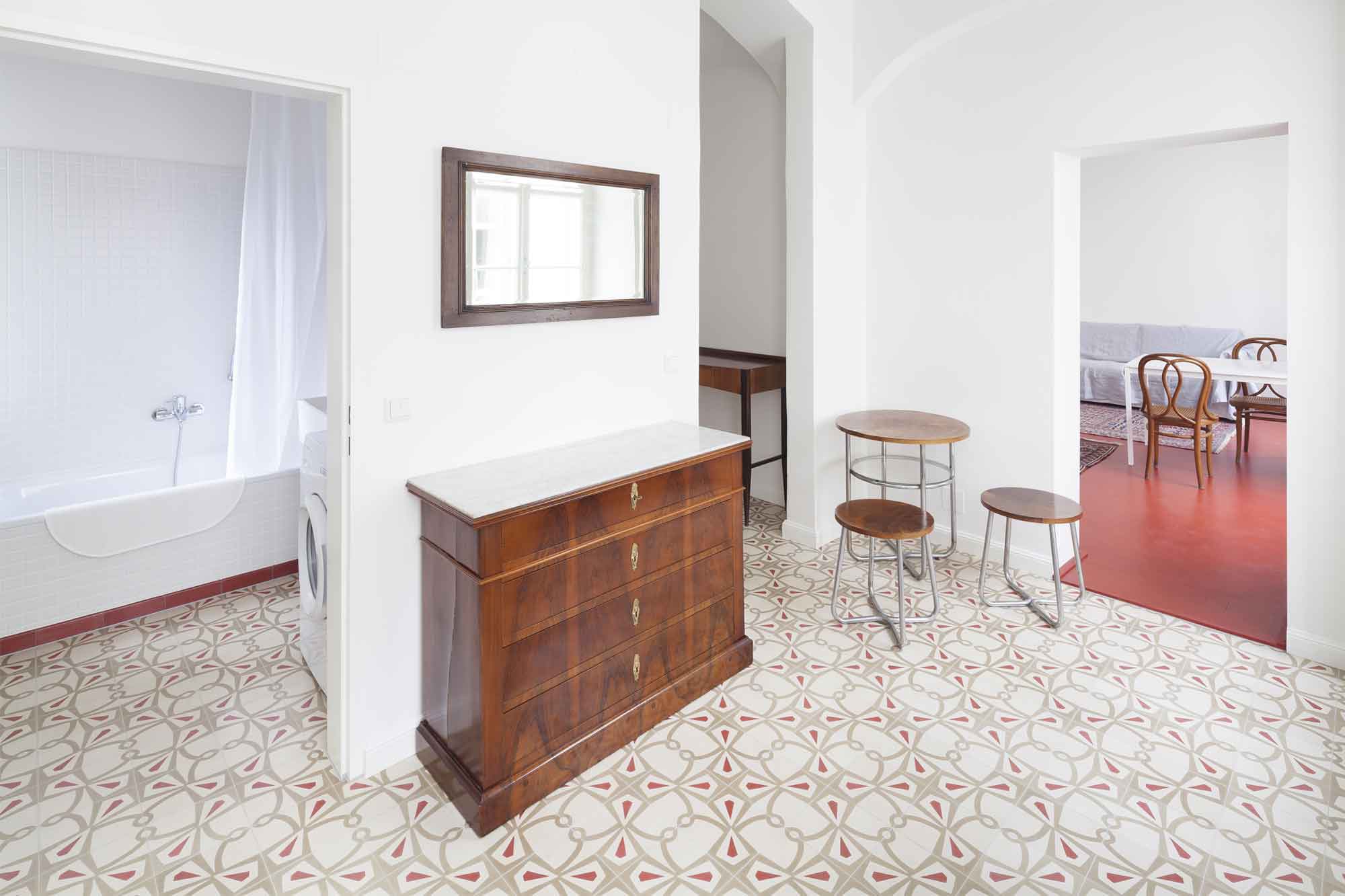
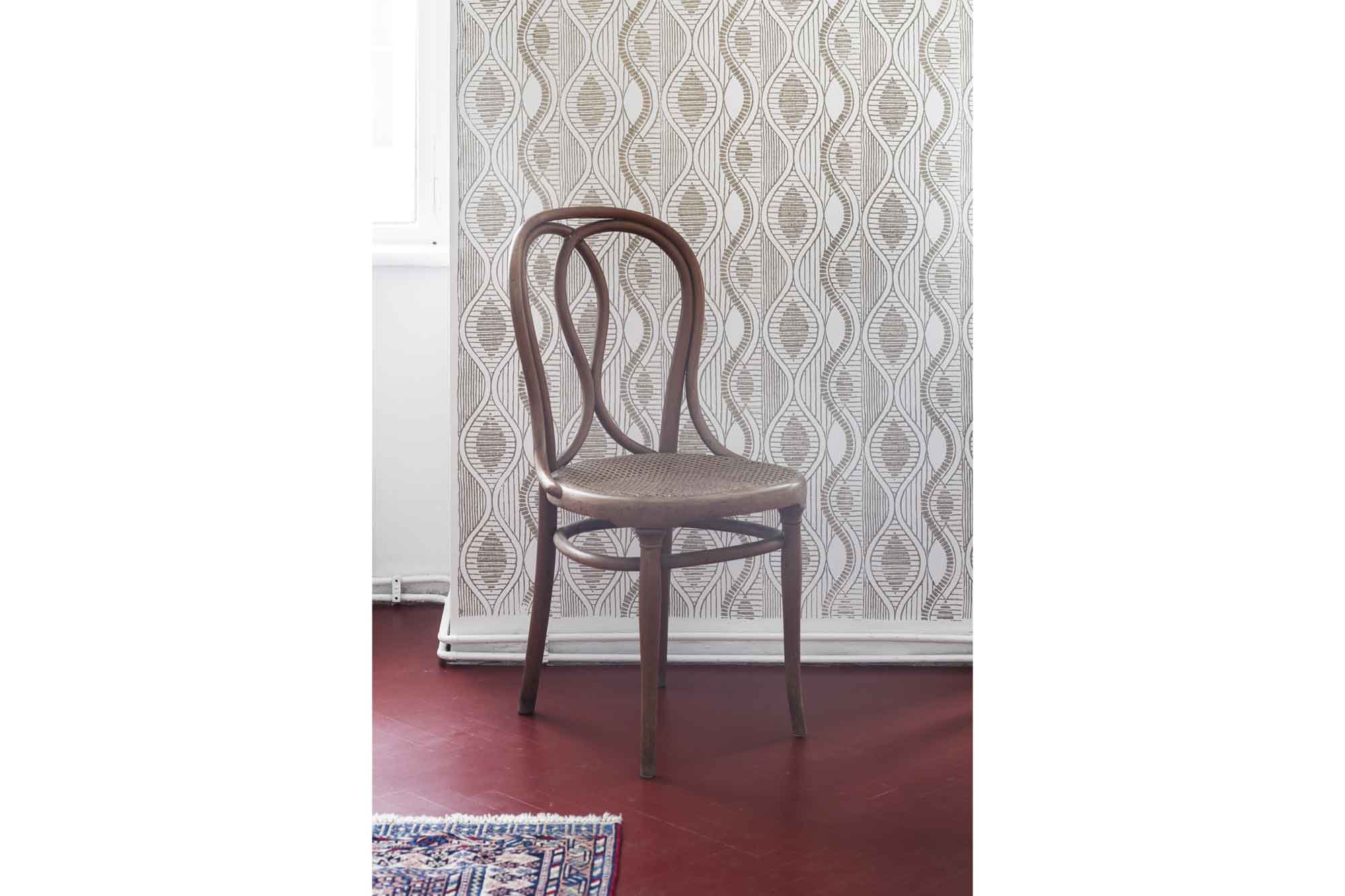
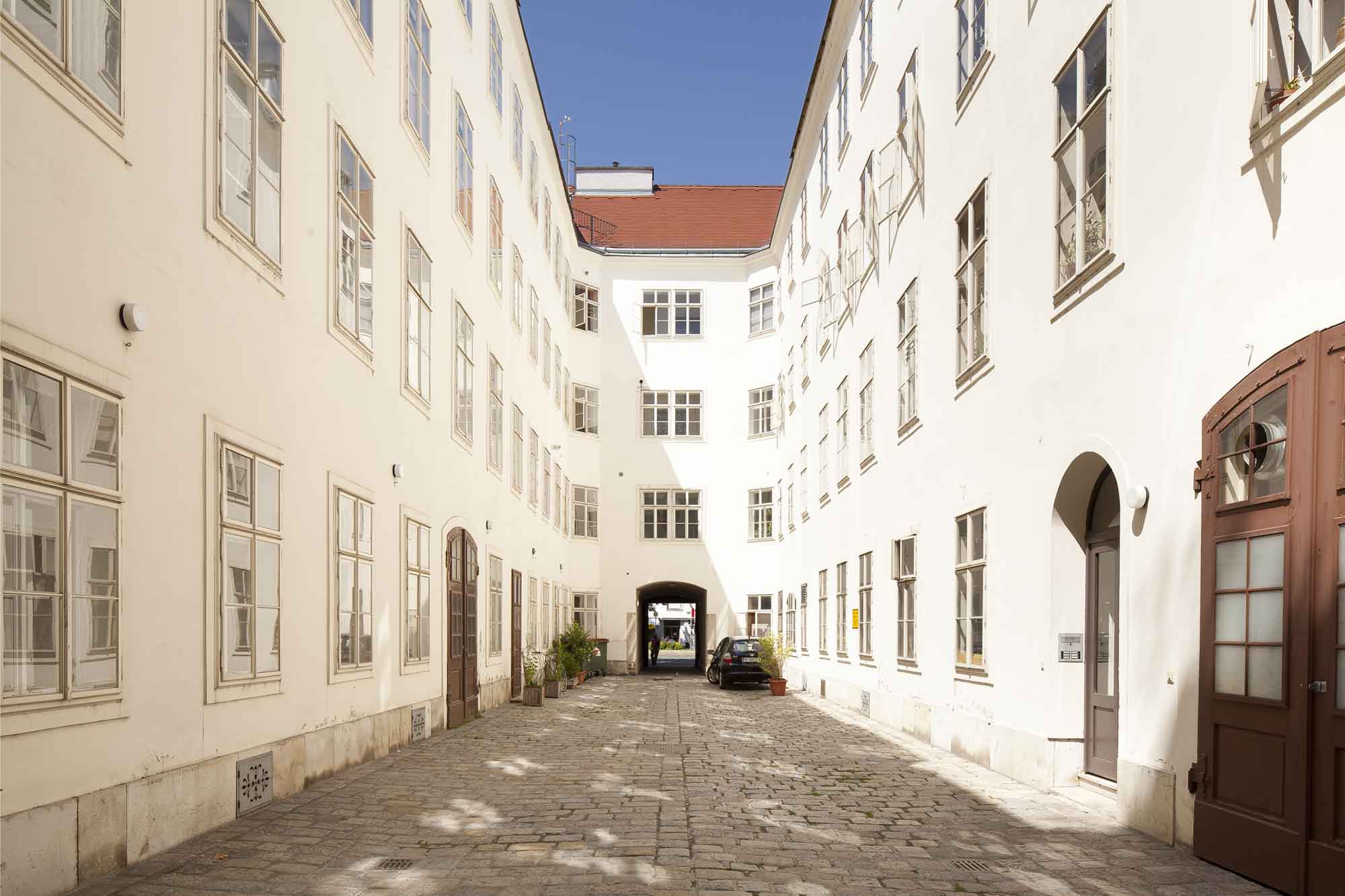
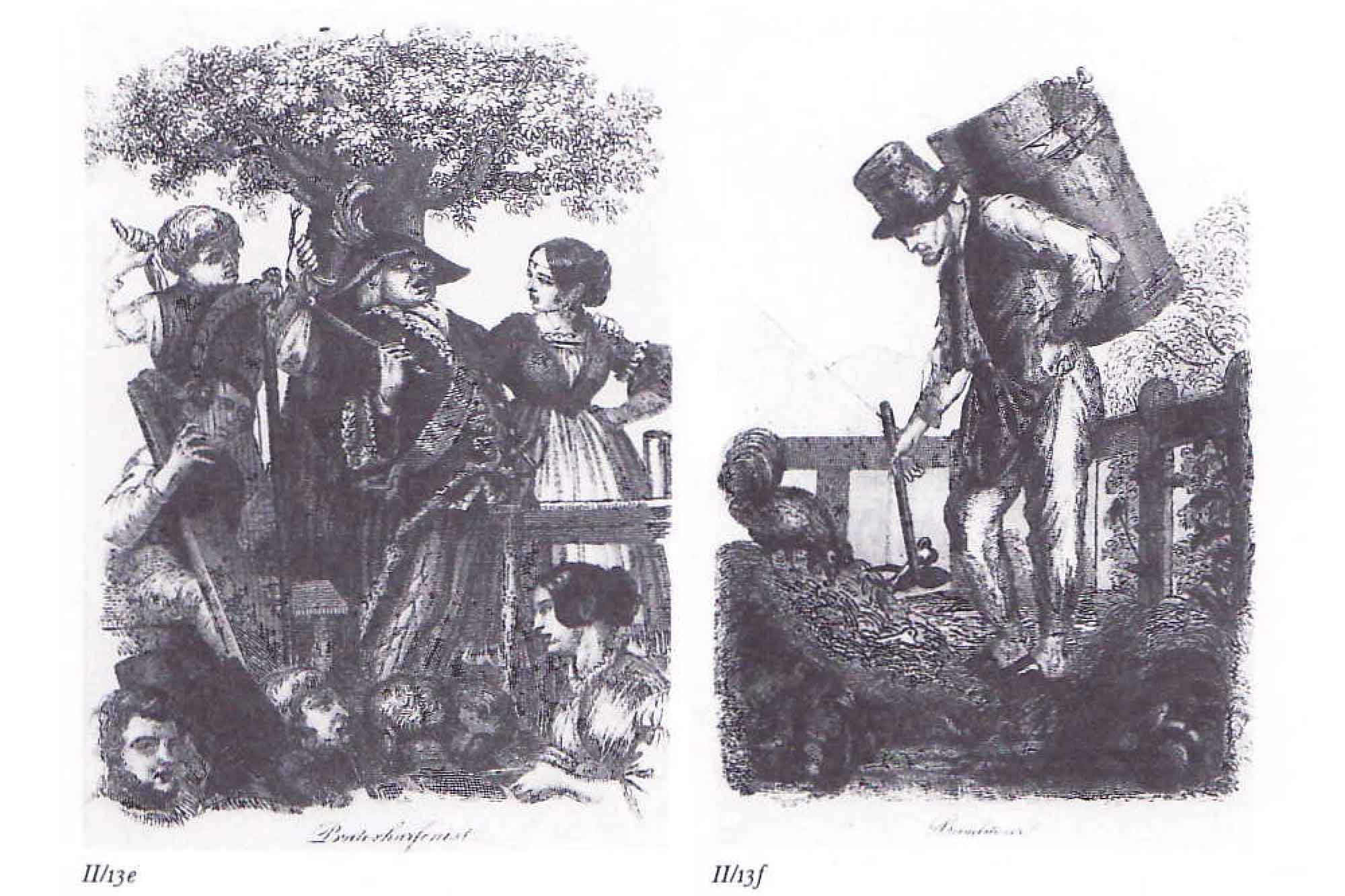
Apartments Praterstraße
Three small apartments of 40m² each were converted into partially furnished rental apartments, also for short and medium-term use (boarding apartments). The original structure was to be restored as far as possible. Few, but strong materials are added: cement tiles, latex paint, white marble, joinery fixtures made of mdf boards. Three apartment siblings with characteristic family traits were created, each with their own peculiarities.
The neighboring houses at Praterstrasse 56 and 58, built between 1832 and 1847, form residential courtyards behind their street wings. Most of the small and medium-sized apartments are oriented towards these courtyards. This type of manufactory courtyard, with a mixture of residential and commercial space, is more common outside the city center. Late Biedermeier large apartment buildings, which with their corridor-kitchen arrangement are also the forerunners of the apartment blocks of the Gründerzeit.
Praterstrasse, 1120 Vienna / 2012
Client: private
/ Soul exorcists and Prater harpists /
Living in the courtyard is followed by a certain introversion. Good for the interior designer. The probable residents we imagined during the planning phase were hardly like the Biedermeier figures who may once have lived here. Soul stagers and event prater harpists would move in, modern professional nomads, between airport precariat and corporate jet set. Only the vaults had remained the same.
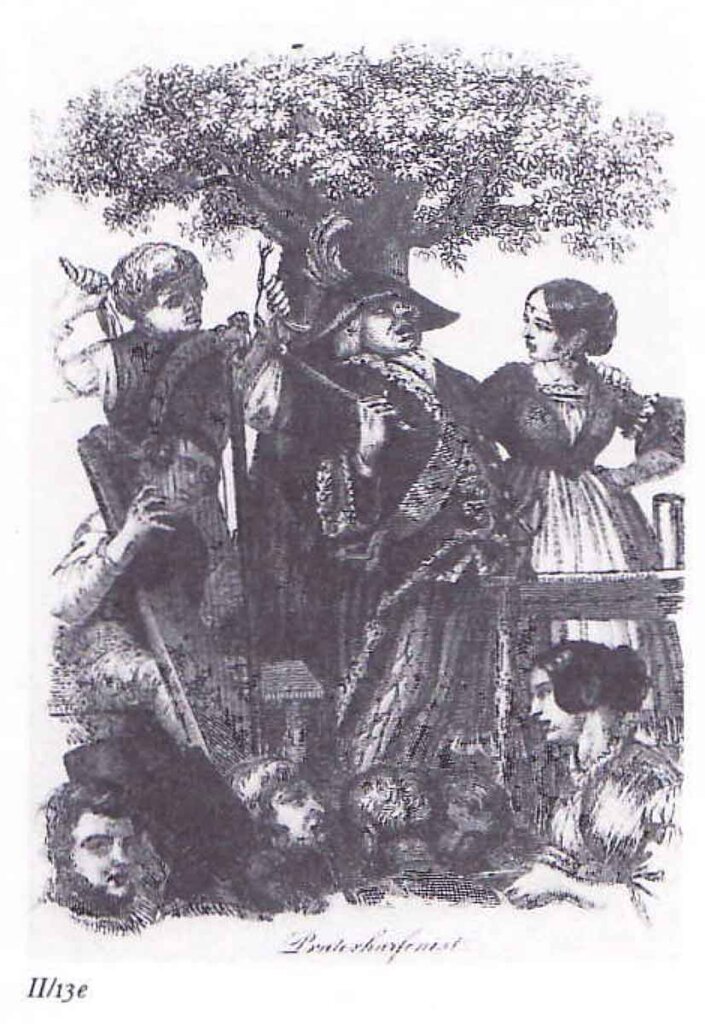
The Prater harpist
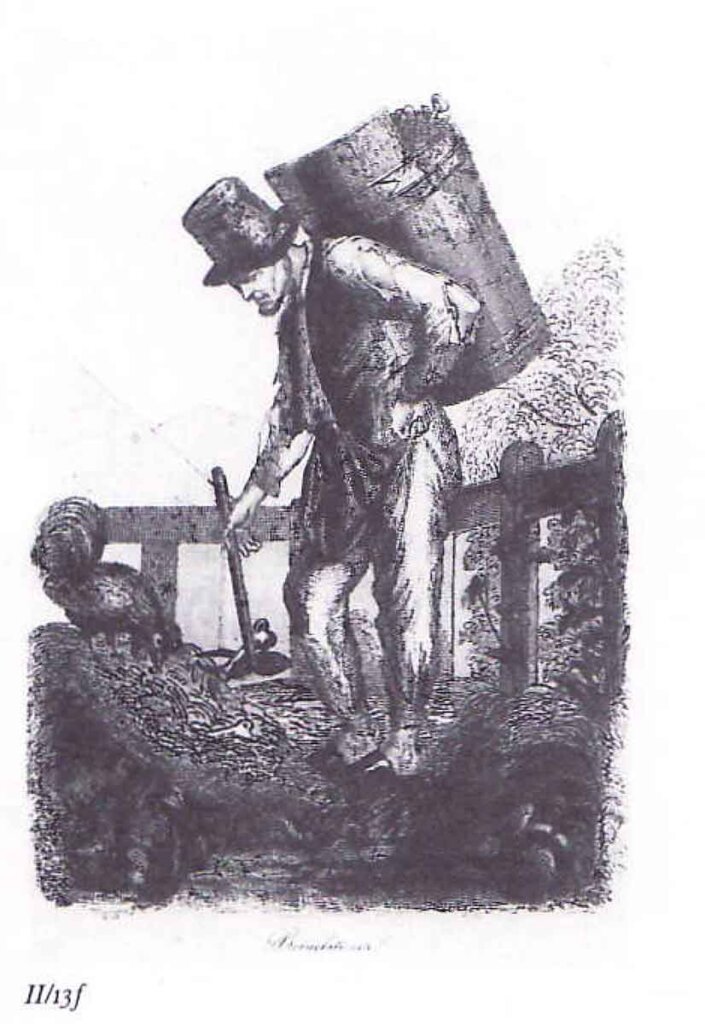
The leg stretcher
Vienna and its Viennese, 1844
The Prater harpist
The leg stretcher
The dumpling chef
The poodle shearer
The roaster
The janitor
(Carl Mahlknecht after Wilhelm Böhm,
from: Biedermeier in Vienna 1815–1848; Verlag Philipp von Zabern, Mainz)


